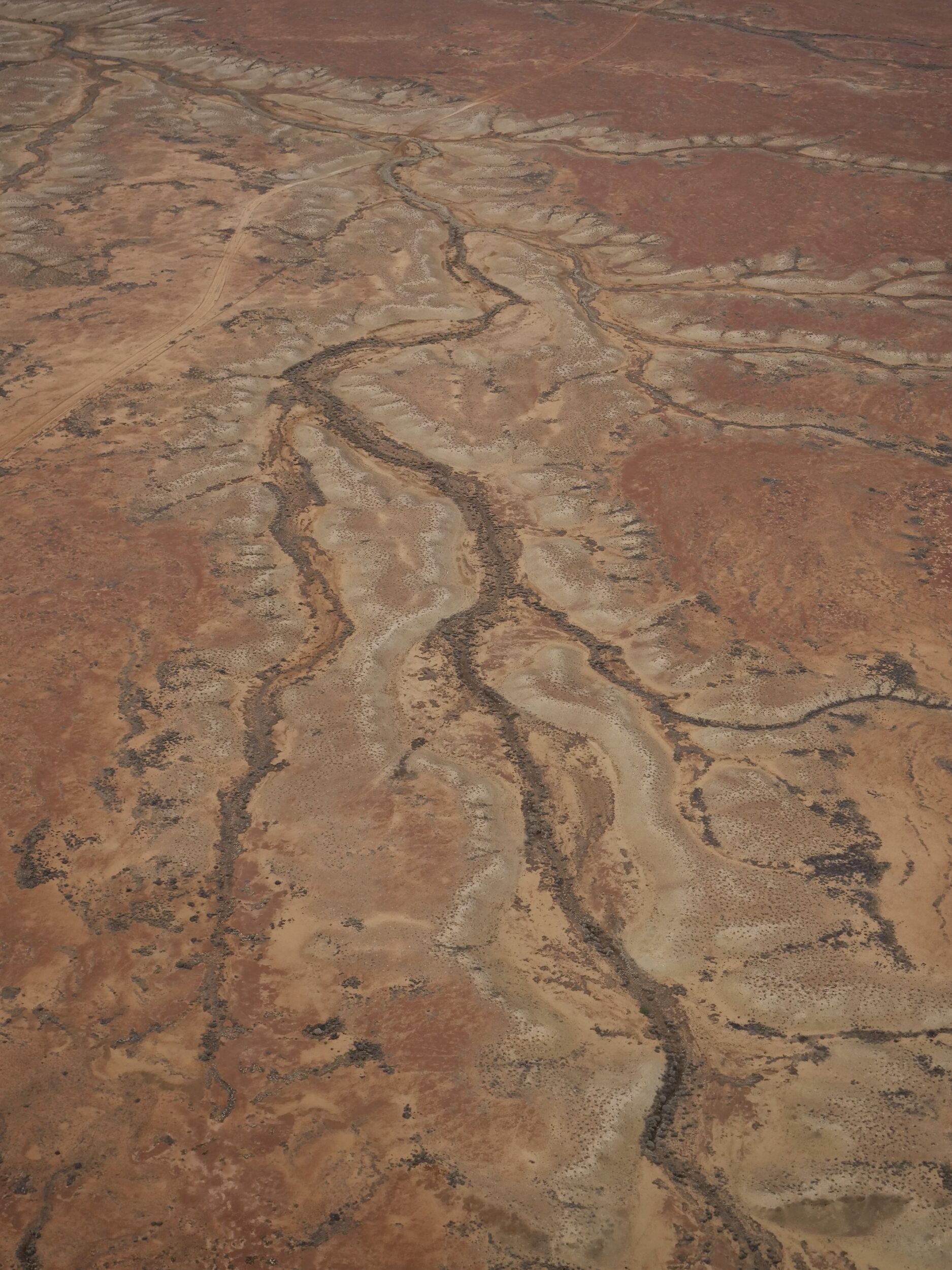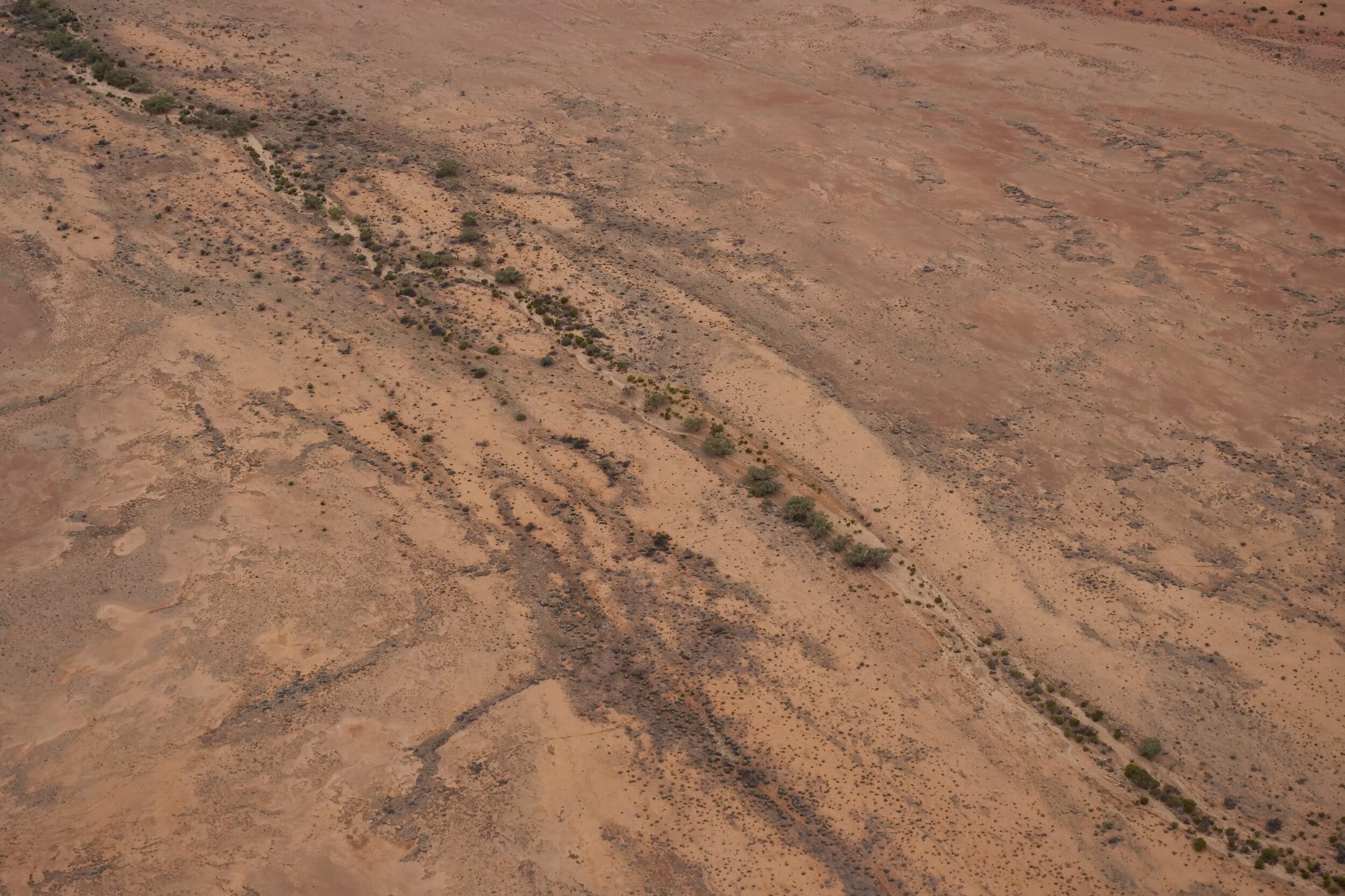Even a flat, harsh, arid landscape – the kind some humans regard as “ugly” or “boring”, when they experience it only at ground level – is likely to prove “amazing” and “beautiful” to the very same humans, if ever they fly over it.
This “revelation” is very nearly an inevitability if the relevant aircraft flies when the sun is “low”.
One winter morning in 2023 my beloved and I flew over just such a landscape – the one in which sits Australia’s most extensive lake.
Only ephemeral rivers “feed” Lake Eyre/Kati Thanda, but when they do flow “all the way”, the usually-dry saltpan becomes an inland sea, teeming with life.
On the surface of the Lake Eyre Basin’s stark landscapes a substantial flow of water is a rare event.
Nonetheless, flowing water is those landscapes’ great “marker” and “shaper”.

The photos’ redder (and harder) land surfaces are what Australians know as “gibber” or “gibber plains”.
Gibber plains have other names in other lands.
Their generic name is “desert pavement”.
The lighter-coloured parts of the image above – from the pavements’ eroding edges, through to the ephemeral rivers’ banks – are softer, sandy surfaces.
The gibber is what is left when the sand and dust are blown away by the desert winds. Blowing sand polishes and smooths the stones and gravel. A stone shaped by windblown sand is called a ventifact. In many places the gibbers have a desert varnish, a veneer of iron- or silica-rich material. When dry, the gibber plains are hard surfaced, but after rain the spongy nature of the soil beneath the gibbers is apparent when it becomes muddy. Desert varnish is the thin iron oxide coating of the stones that has been polished by the blowing sand and dust.
The above description is from M.H. Monroe’s “biography” of the Australian continent, Australia: The Land Where Time Began.
Its account of how gibber plains are formed is but one of various hypotheses, and there is no universal agreement on the matter; it is eminently possible that there may not be a single, globally “correct” explanation.
Click here for an overview.
One could view the variegated nature of the Lake Eyre Basin’s surface as the product of an ongoing dance/contest between water, wind, fire, earth, sunlight, plants, herbivores…and humans.
For the past 180 or so years a “new” human category – new, at least, to this part of the world – has been part of the equation: pastoralists…and their sheep, cattle, goats et al..
